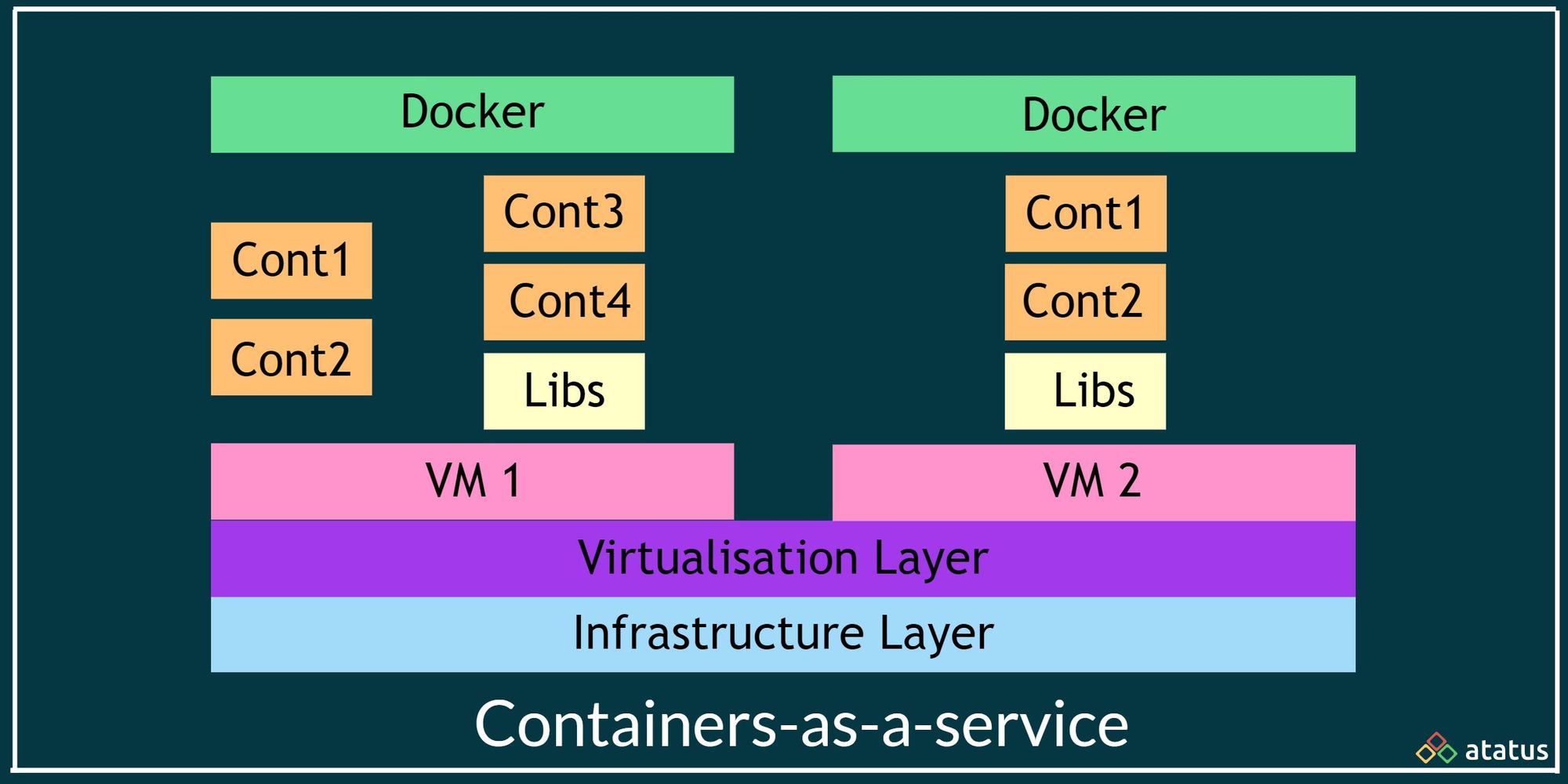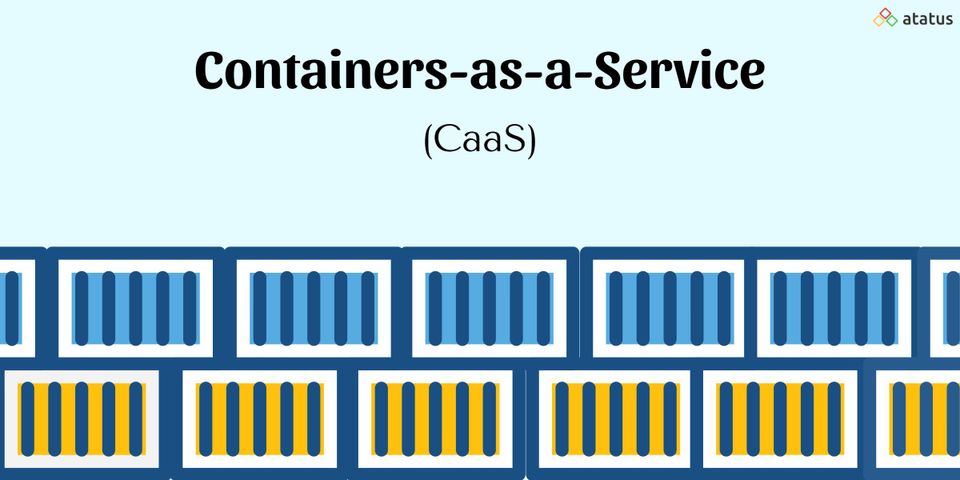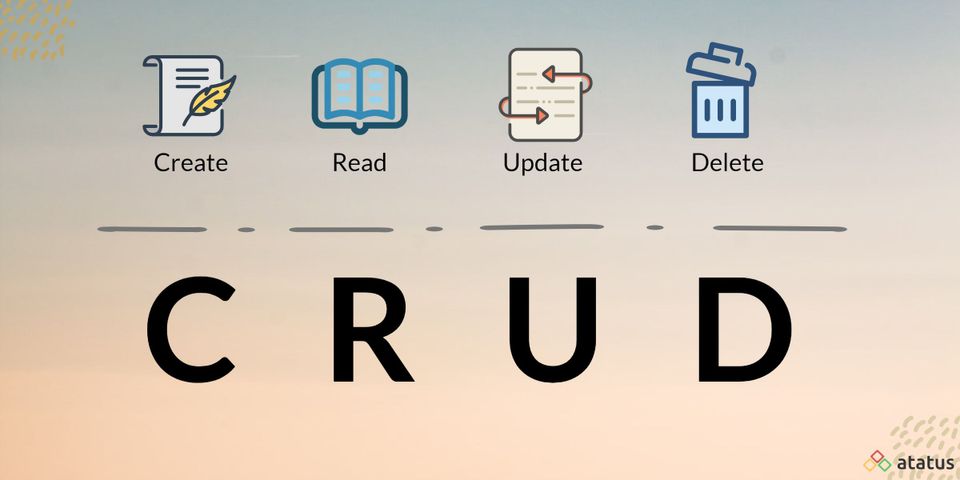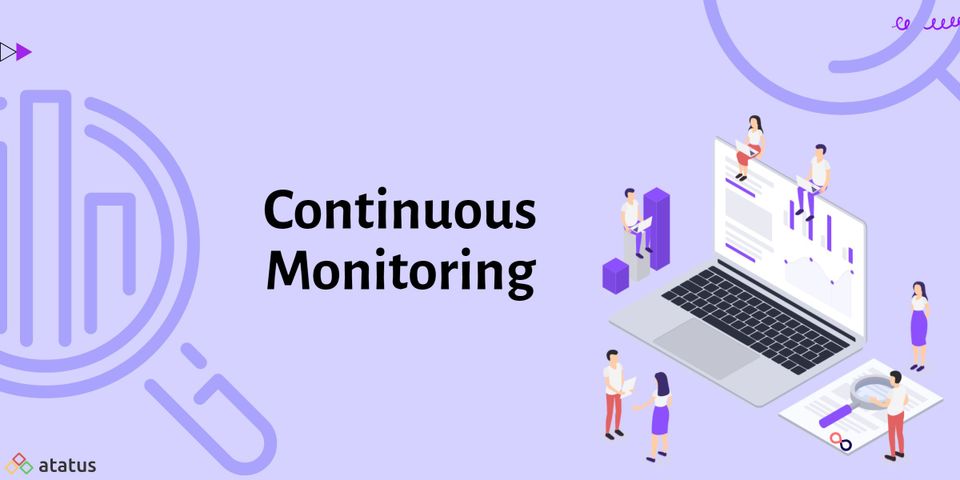Containers as a service (CaaS) is a sort of service that makes it easier for businesses to manage containers. CaaS can be implemented in a variety of methods, but they all have one thing in common: Software development teams would have to deploy, operate, and monitor the underlying infrastructure that containers run on if they didn't use CaaS. This architecture consists of a combination of cloud machines and network routing systems that must be overseen and managed by dedicated DevOps resources.
Here we will go over the following:
- What is Container?
- What is Containers-as-a-Service?
- How Does CaaS Work?
- Benefits of CaaS
- Challenges in Deploying CaaS
- Why CaaS is Important?
What is Container?
Containers are executable software units in which application code, as well as its libraries and dependencies, are packaged in standard ways so that they may be run anywhere, whether on a desktop, in traditional IT, or in the cloud.
What is Containers-as-a-Service?
Containers-as-a-Service is a cloud service model that allows users to upload, organize, start, stop, scale, and manage containers, applications, and clusters. These operations are enabled through the use of container-based virtualization, an application programming interface (API), or a web portal interface. CaaS enables users to build secure, scalable containerized applications in either on-premises or cloud data centres. This architecture uses containers and clusters as a service, which may be deployed in the cloud or on-premises data centres.
CaaS allows development teams to think in terms of higher-order containers rather than dealing with lower-level infrastructure management. This gives development teams a clearer picture of the final product, allowing for more agile development and increased customer value.
How Does CaaS Work?
A container is a logical package that contains all of the IT infrastructure needed to run an application. The packaging includes all of the components that allow the container package to run applications in isolation, such as libraries, configuration files, and dependencies, in the same way, that virtual machines (VMs) do.

A CaaS service's principal resource is the container itself, whereas an IaaS service often provides VMs or bare metal servers. Containers are essential for swiftly developing microservices applications since application components are portable across cloud environments.
As a result, a containerized application development process enables a multi-cloud strategy, saves overhead expenditures like license, operation fees, and optimizes running costs. CaaS simplifies the deployment and hosting of container technologies in high-availability cloud environments.
CaaS simplifies the deployment and hosting of container technologies in high-availability cloud environments. CaaS varies from the Platform as a Service (PaaS) concept in that it is not tied to a certain code stack ecosystem or has application-level dependencies on language runtime and databases.
Benefits of CaaS
Here are a few of the benefits of using containers:
Development
Container-based infrastructure has the advantage of having an effective and efficient development process. Containers allow applications to work and run as though they were constructed locally, eliminating environmental inconsistencies. Removing these inconsistencies makes testing and debugging easier. This feature may also be used to update applications, as it just takes a few minutes for the developer to alter the configuration file, build new containers, and destroy the old ones.
Security
Container isolation serves as a risk-reduction element as well as a security feature. If one application is hacked, the consequences will not extend to the other containers. It's also easier to keep track of your host system. Since containers execute application processes in isolation from the operating system and don't require specific software to run applications, you can quickly deploy updates and security patches. This benefit enables you to deploy updates and security patches more quickly.
Speed
A container can be created, started, replicated, or destroyed in seconds because it doesn't require an operating system. This benefit enables a faster development process, reduces time to market and operating speed, and speeds up the release of new versions or software simply and easier. This speed improves the consumer experience by allowing businesses and developers to respond quickly to bugs and implement new features.
Portability
Containers hold all of the application's dependencies, libraries, and configuration files, allowing it to execute in a separate environment from the underlying infrastructure. Users can flexibly transition between different cloud environments while still launching applications as cloud-native technologies.
Efficiency
Containers run on a shared OS and require fewer files to run the applications. A container's start time is a few minutes, and the overall volume size is in the megabyte range, unlike virtual machines, which require files in the gigabyte range.
Scaling
Horizontal scaling is possible with containers, allowing end-users to scale out by combining many identical containers within the same cluster. You may substantially cut costs and increase your return on investment by employing smart scaling and running only the containers you need when you need them.
Challenges in Deploying CaaS
Containers are highly visible places that do not run on bare metal. The extra layer between the bare metal and the application containers and their characters is lacking something. When you add in the net loss of the container connected with the hosting plan, you get a considerable performance loss. As a result, even with the high-quality hardware available, businesses must expect some loss in container functionality. Hence, using bare metal applications to test the application's full functionality is sometimes recommended.
Containers are believed to be safer than Microsoft Machines, but they do pose some risks. Containers have the same kernel as the operating system, despite being platform-independent. If the containers are targeted, this puts them in danger of being targeted. As containers are deployed in the Cloud via CaaS, the risks multiply dramatically.
Why CaaS is Important?
CaaS is a model with a wide range of uses. It helps developers in developing a fully scalable container and application deployment. The approach is beneficial to IT teams because it provides a container deployment service with governance control in a secure environment. The CaaS approach aids businesses in simplifying container management within their software-defined infrastructure.
Users can choose and only pay for the CaaS resources they want, just like they can with other cloud computing services. Compute instances, scheduling capabilities, and load balancing are some examples of CaaS resources.
CaaS is a subset of infrastructure as a service (IaaS) and is located between IaaS and platform as a service (PaaS) in the spread of cloud computing services. In contrast to the virtual machines (VMs) and bare metal hardware host systems usually utilized in IaaS environments, CaaS includes containers as its primary resource.
Orchestration, which automates core IT processes, is an important feature of CaaS technology. CaaS orchestration platforms include Google Kubernetes and Docker Swarm. CaaS and container technologies are proving to be beneficial to enterprise clients across all industries.
Containers boost efficiency and enable these companies to easily deploy innovative solutions for application modernization and cloud-native microservices development. Containerization enables these clients to deploy software more quickly, improve mobility between hybrid and multi-cloud systems, and save infrastructure, software licensing, and operational expenses.
Conclusion
CaaS is a powerful modern hosting paradigm that can only be used if you're familiar with containers. CaaS can be tremendously advantageous to software development teams that are highly agile. It can be a huge help when it comes to implementing continuous deployment on a project. Most modern cloud hosting providers offer CaaS solutions at low pricing, so you won't have to hunt far for a good CaaS.
Monitor Your Entire Application with Atatus
Atatus provides a set of performance measurement tools to monitor and improve the performance of your frontend, backends, logs and infrastructure applications in real-time. Our platform can capture millions of performance data points from your applications, allowing you to quickly resolve issues and ensure digital customer experiences.

Atatus can be beneficial to your business, which provides a comprehensive view of your application, including how it works, where performance bottlenecks exist, which users are most impacted, and which errors break your code for your frontend, backend, and infrastructure.





